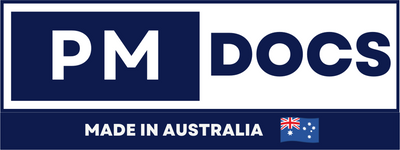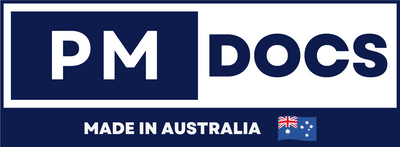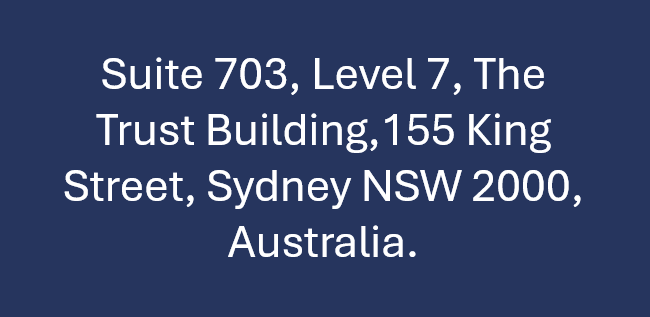ISO 27001 VS Data Governance Understanding The Link
Introduction
In today's digital age, protecting information is more crucial than ever. The sheer volume of data generated and the increasing sophistication of cyber threats have made data protection a top priority for businesses worldwide. Organizations are tasked not only with safeguarding sensitive data against breaches but also with ensuring compliance with a myriad of regulations. Two prominent frameworks that help organizations manage and protect their data are ISO 27001 and data governance. Understanding the link between these two frameworks can significantly enhance your organization's data security and management capabilities, leading to more robust protection mechanisms and efficient data handling processes.

What Is ISO 27001?
ISO 27001 is an internationally recognized standard for information security management systems (ISMS). It provides a systematic approach to managing sensitive company information, ensuring its confidentiality, integrity, and availability. This standard is designed to help organizations of all sizes and sectors protect their information assets and reduce the risk of data breaches. By adopting ISO 27001, organizations can manage their security practices consistently and efficiently, leading to improved resilience against cyber threats and better compliance with legal requirements.
Key Components Of ISO 27001
-
Risk Assessment: Identifying potential threats and vulnerabilities to your information. This involves analyzing the likelihood and impact of different security incidents and determining the best ways to mitigate these risks. Regular risk assessments are crucial for staying ahead of emerging threats and ensuring that security measures remain effective.
-
Security Policy: Establishing a set of guidelines and objectives for managing security. A well-defined security policy serves as a roadmap for implementing and maintaining security practices across the organization. It should be regularly reviewed and updated to reflect changes in the threat landscape and business operations.
-
Asset Management: Keeping track of information assets and their risks. This involves identifying and categorizing all data assets, understanding their value, and implementing appropriate protection measures. Effective asset management ensures that resources are allocated efficiently to protect critical information.
-
Access Control: Ensuring that only authorized individuals have access to sensitive information. Implementing robust access control measures helps prevent unauthorized access and reduces the risk of data breaches. This includes managing user identities, defining access rights, and monitoring access activities.
-
Incident Management: Preparing for and responding to security breaches. An effective incident management process enables organizations to quickly detect, respond to, and recover from security incidents, minimizing their impact. This involves establishing procedures for reporting incidents, conducting investigations, and implementing corrective actions.
ISO 27001 is not just about implementing technical controls; it involves a comprehensive approach that includes people, processes, and technology. The standard emphasizes the importance of creating a security-aware culture within the organization and ensuring that all employees understand their roles and responsibilities in protecting information.
What Is Data Governance?
Data governance refers to the management of data availability, usability, integrity, and security in enterprise systems. It involves a set of practices and processes that help ensure data is accurate, consistent, and used responsibly. Effective data governance enables organizations to maximize the value of their data assets while minimizing risks associated with data misuse and non-compliance with regulatory requirements.
Core Elements Of Data Governance
-
Data Quality: Ensuring data is accurate and reliable. High-quality data is essential for making informed business decisions and maintaining trust with stakeholders. Organizations must implement processes for data validation, cleansing, and enrichment to maintain data quality.
-
Data Management: Organizing and maintaining data processes and architecture. This involves designing and implementing systems for data storage, retrieval, and processing. Effective data management ensures that data is easily accessible and can be used efficiently to support business operations.
-
Data Security: Protecting data from unauthorized access and breaches. This includes implementing technical and organizational measures to safeguard data throughout its lifecycle. Data security is a critical aspect of data governance, as it helps prevent data breaches and ensures compliance with data protection regulations.
-
Compliance: Adhering to laws and regulations regarding data management. Organizations must be aware of and comply with various data protection laws, such as GDPR, HIPAA, and CCPA. Compliance involves implementing policies and procedures that align with legal requirements and regularly auditing data practices to ensure adherence.
-
Data Stewardship: Assigning responsibilities for managing data assets. Data stewards are responsible for overseeing data quality, security, and compliance within their domains. They play a crucial role in implementing and maintaining data governance practices across the organization.
Data governance ensures that an organization's data is handled in a way that meets business and regulatory requirements. By establishing clear policies and procedures for data management, organizations can improve data quality, reduce risks, and enhance their ability to derive value from their data assets.
ISO 27001 And Data Governance The Connection
While ISO 27001 and data governance serve different primary purposes, they share common goals of protecting and managing data effectively. Here's how they connect:
1. Shared Objectives - Both frameworks aim to ensure that data is handled securely and responsibly. ISO 27001 focuses on the security of information systems, emphasizing risk management and the implementation of controls to protect data. On the other hand, data governance emphasizes the quality and accountability of data management, ensuring that data is accurate, consistent, and used in compliance with regulations. Together, they form a holistic approach to data protection, addressing both security and quality aspects.
2. Complementary Practices - ISO 27001's structured approach to risk management can enhance data governance efforts. By identifying and mitigating risks, organizations can improve data quality and security, which are core objectives of data governance. Similarly, data governance practices can inform the development of an ISMS under ISO 27001 by providing insights into data flows, usage patterns, and potential vulnerabilities. This collaboration ensures that security measures are aligned with business needs and that data is managed effectively throughout its lifecycle.
3. Compliance and Risk Management - Both frameworks help organizations comply with legal and regulatory requirements. ISO 27001 provides a risk management framework that supports data governance by addressing security risks and establishing controls to protect data. Data governance ensures compliance with data-related laws, such as GDPR, by managing data quality and privacy. Together, they enable organizations to demonstrate compliance with a wide range of regulations and standards, reducing the risk of legal penalties and reputational damage.
Benefits Of Integrating ISO 27001 And Data Governance
-
Enhanced Security: By combining the structured approach of ISO 27001 with the comprehensive data oversight of data governance, organizations can significantly improve their data security posture. This integration helps identify and address security vulnerabilities more effectively, reducing the likelihood of data breaches.
-
Improved Compliance: Integration ensures that all aspects of data handling meet regulatory requirements, reducing the risk of non-compliance penalties. By aligning security and governance practices, organizations can streamline compliance efforts and demonstrate adherence to data protection laws.
-
Efficient Data Management: Organizations can streamline data management processes, reducing redundancy and improving data quality. Integrated practices ensure that data is consistently managed and maintained, leading to better decision-making and more efficient use of resources.
-
Risk Mitigation: A unified approach helps identify and address potential security threats and data quality issues proactively. By integrating risk management and governance practices, organizations can develop more effective strategies for mitigating risks and protecting their data assets.
Steps To Integrate ISO 27001 And Data Governance
-
Assess Current Practices: Conduct an audit of your existing data governance and ISO 27001 practices to identify gaps and overlaps. This assessment provides a clear understanding of the organization's current capabilities and areas for improvement.
-
Develop a Unified Strategy: Create a strategy that aligns the objectives of ISO 27001 and data governance. This should include defined roles, responsibilities, and processes for managing data security and quality. A unified strategy ensures that all stakeholders are working towards common goals and that resources are allocated effectively.
-
Implement Integrated Policies: Develop policies that incorporate both ISO 27001 and data governance principles. Ensure these policies address risk management, data quality, and compliance. Integrated policies provide a consistent framework for managing data across the organization and help ensure that all practices are aligned with business objectives.
-
Train Your Team: Ensure all employees understand the integrated approach and their roles in maintaining data security and quality. Regular training sessions can help reinforce these practices and ensure that employees are equipped with the knowledge and skills needed to implement them effectively.
-
Monitor and Review: Continuously monitor the effectiveness of your integrated approach and make adjustments as necessary. Regular reviews can help identify areas for improvement and ensure ongoing compliance with regulatory requirements. By maintaining a proactive approach to monitoring and reviewing practices, organizations can adapt to changing threats and regulations.
Conclusion
Integrating ISO 27001 with data governance practices provides a comprehensive framework for managing and protecting information. By understanding the link between these two, organizations can enhance their data security, improve compliance, and ensure efficient data management. As the digital landscape continues to evolve, adopting a unified approach to data protection and governance will be crucial in maintaining trust and safeguarding sensitive information. Organizations that successfully integrate these frameworks will be better positioned to navigate the complexities of the digital age, protect their data assets, and maintain a competitive edge in the marketplace.




